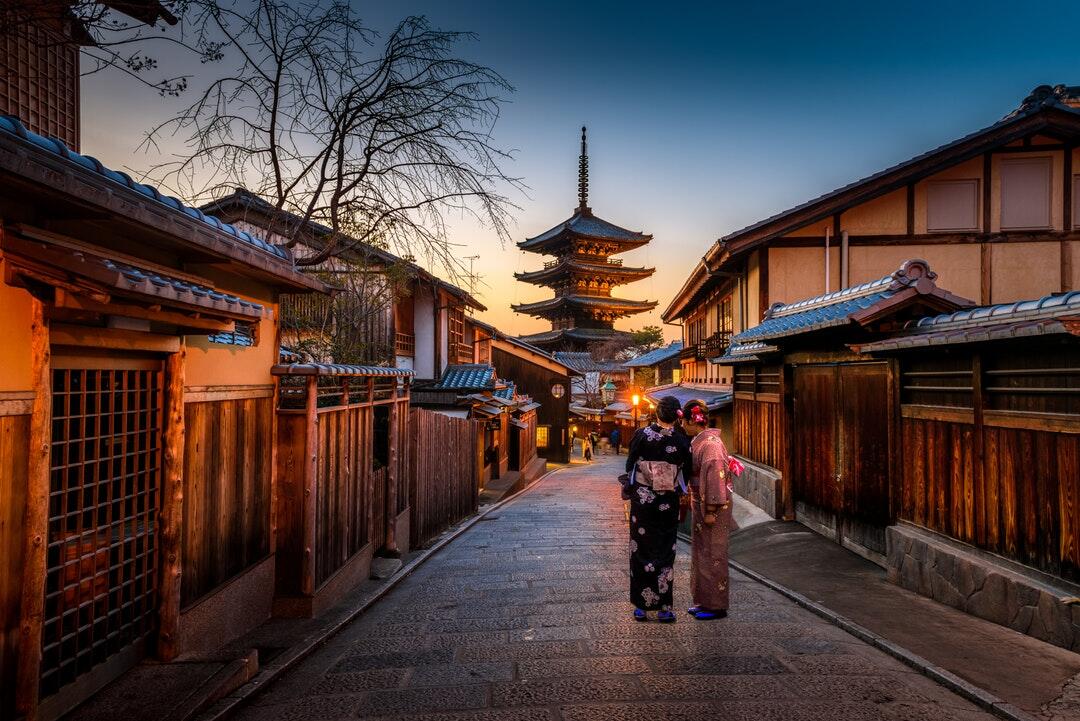Japan, with its rich cultural heritage and deep-rooted traditions, boasts a tapestry of rituals and customs that shape every stage of life.
From birth to the solemnity of death, Japanese society is imbued with ceremonies and practices that reflect reverence for ancestors, respect for nature, and a profound sense of community.
In this exploration, we delve into the diverse array of Japanese rituals and customs that accompany individuals on their journey from cradle to grave.
Table of Contents
Birth and Naming Ceremonies
In Japan, the arrival of a new life is celebrated with great joy and reverence. The birth of a child is marked by a traditional ceremony known as “o-shichiya,” which typically takes place on the seventh day after birth. During this ceremony, family and friends gather to offer prayers and blessings for the health and prosperity of the newborn.
One of the most important aspects of the o-shichiya ceremony is the naming of the child. Names hold significant importance in Japanese culture, often reflecting the hopes and aspirations of the parents for their child’s future. The choice of a name is carefully considered, taking into account factors such as the meaning of the characters and their auspiciousness.
Coming of Age Ceremony: Seijin no Hi
As adolescents reach the age of 20 in Japan, they are celebrated in a ceremony known as Seijin-no-Hi, or Coming of Age Day. Held annually on the second Monday of January, this event commemorates the transition from adolescence to adulthood and is marked by various festivities across the country.
Young adults dress in traditional attire such as furisode for women and hakama for men, symbolizing their newfound maturity and responsibility. They attend ceremonies at local government offices where they receive words of encouragement from officials and reaffirm their commitment to becoming contributing members of society.
Following the formal proceedings, many participants gather with family and friends to celebrate this milestone with festive meals and sake drinks, further emphasizing the significance of this rite of passage in Japanese culture.
Marriage Customs: Shinto Weddings
Marriage is considered one of the most sacred and joyous occasions in Japanese culture, marked by elaborate ceremonies and rituals. Traditional Japanese weddings, known as “Shinto weddings,” are deeply rooted in the country’s indigenous religion and customs.
Shinto weddings often take place at shrines, where couples receive blessings from a Shinto priest in the presence of their families and friends.
The ceremony involves rituals such as the exchange of sake cups, symbolizing the union of two families, and the sharing of vows to honor and cherish each other for a lifetime. Additionally, taking sake courses to learn how this drink is brewed and its significance in Shinto weddings can be a fun activity for couples to do together.
Festivals and Seasonal Celebrations
Throughout the year, Japan has vibrant festivals. They reflect the country’s rich cultural heritage. From cherry blossom viewing in spring to the lively Bon Odori dances in summer, each season brings its unique rituals and customs.
One of Japan’s most iconic festivals is “Hanami” or cherry blossom viewing. People gather in parks and gardens to admire the beauty of cherry blossoms in full bloom. It is a time for picnics, sake, and enjoying the fleeting beauty of nature with loved ones.
Aging Gracefully: Respect for the Elderly
In Japanese society, respect for the elderly is deeply ingrained in the culture, and advancing age is revered as a mark of wisdom and experience. As people grow older, they are honored and celebrated. This happens through various customs and rituals. The customs recognize their contributions to family and community.
One such tradition is “Keiro no Hi” or Respect for the Aged Day, a national holiday held on the third Monday of September. On this day, families gather to honor their elders. They offer gifts and give thanks for their guidance and wisdom over the years.
Embracing Impermanence: Funeral and Mourning Practices
In Japan, death is seen as a natural part of life. Rituals for funerals and mourning are rooted in Buddhist traditions there. Upon the passing of a loved one, family members and friends come together to mourn their loss and to provide support to the grieving family.
Funeral ceremonies have rituals. These include the washing and dressing of the dead person’s body. Monks chant Buddhist scriptures. Incense is burned as a symbol of purity and spiritual change. Mourners offer prayers and words of comfort to the bereaved, fostering a sense of communal solidarity in times of grief.
After the funeral, family members continue honoring the deceased. They do this through otsuya, a wake held the night before the funeral, and otsuji, a memorial service on the seventh day after death. These rituals are times for reflection and remembrance. They allow loved ones to cherish the memories of the departed and find comfort in sorrow.
Honoring Ancestors: Obon Festival and Oseibo
In Japan, the bond between the living and the dead is deeply revered. There are many rituals for honoring ancestors and departed loved ones. One such tradition is the Obon Festival. It happens every August. Families gather to honor their ancestors’ spirits.
During Obon, altars have offerings of food and flowers. Lanterns are lit to guide the departed spirits back to earth. Families also visit gravesites to clean and decorate the graves of their ancestors. They offer prayers and incense as a sign of remembrance and gratitude.
Another important ritual is oseibo. It is a custom of giving gifts at the end of the year. People use it to thank their elders and superiors for guiding and supporting them. Oseibo gifts often include food, alcohol, and household items. They symbolize appreciation and goodwill towards others.
Embracing Japanese Rituals
Japanese rituals and customs are part of life from birth to death. They shape how people celebrate and navigate time. At a wedding, people celebrate joyously. At a funeral, they are solemn. These Japanese home traditions show deep respect for tradition and reverence for life and death.
As we explore the many rituals of Japanese culture, we gain a deeper appreciation for the deep significance of these customs. They shape both individual and collective identities. Japanese rituals offer us a glimpse into the soul of a nation. They share sake at weddings and contemplate cherry blossoms. In doing so, they show us everything Japan can offer, a country steeped in tradition and reverence for nature.
If you’re interested in discovering more helpful tips and tricks, be sure to check out the rest of our site.



